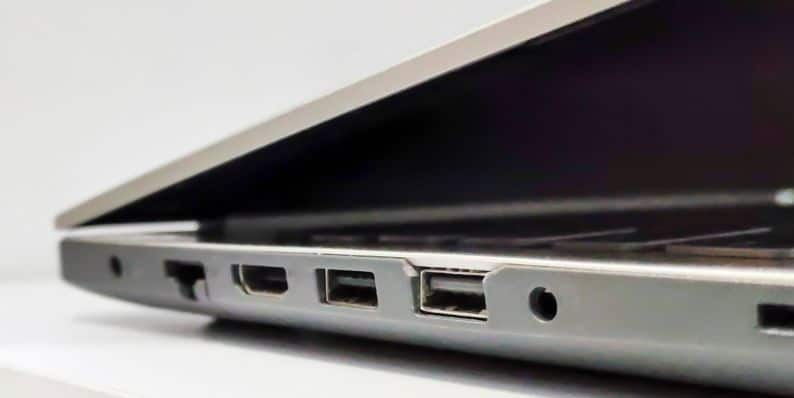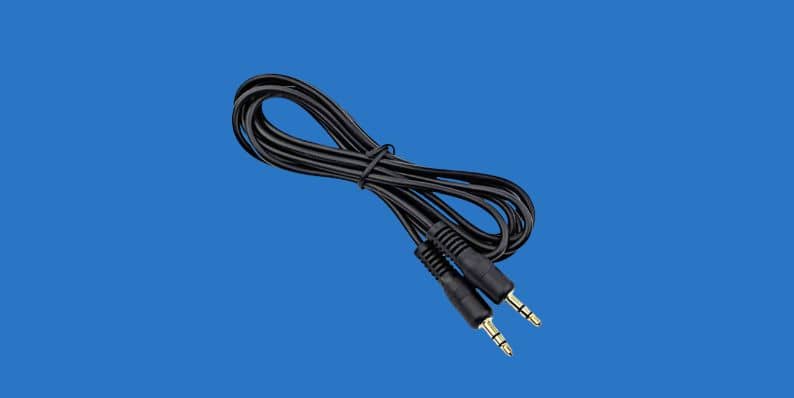You’ve probably seen an AUX port on a car stereo, speaker, or headphones before.
It’s a small, round hole that many people use to connect their phones, laptops, or music players.
But what exactly is an AUX port, and what is it used for?
In this guide, you’ll learn what AUX means, how it works, and where you might use it.
What Is an AUX Port?
 An AUX port (or Auxiliary Port) is a small input that lets audio devices send or receive sound signals. It’s usually a round 3.5mm jack — the same size as a headphone plug. When you plug an AUX cable into this port, you can transfer music, voices, or any sound from one device to another.
An AUX port (or Auxiliary Port) is a small input that lets audio devices send or receive sound signals. It’s usually a round 3.5mm jack — the same size as a headphone plug. When you plug an AUX cable into this port, you can transfer music, voices, or any sound from one device to another.
Quick Fact: AUX ports carry analog audio signals, meaning they send raw sound waves directly without changing them into a digital format.
AUX ports are simple, reliable, and still very common today, even with newer technologies around.
What Does AUX Stand For?
AUX is short for Auxiliary, which means something that provides extra support. In electronics, an Auxiliary Input gives you a way to connect a secondary or outside sound source to a main device.
For example, connecting your phone to your car’s audio system using an AUX cable lets you play your phone’s music through the car’s speakers. The AUX port acts as a bridge between two devices.
What Devices Use AUX Ports?
AUX ports are found on many devices, both old and new. Here are some common examples:
- Car Stereos: Many cars have an AUX input so you can play your music without Bluetooth.
- Headphones: Wired headphones often connect through a 3.5mm AUX plug.
- Speakers: Many home and portable speakers have AUX inputs to connect devices directly.
- Smartphones and Tablets: Older models had built-in AUX ports for headphones and speakers.
- Laptops and PCs: Computers usually have an AUX jack that acts as a headphone or microphone input.
These ports make it easy to transfer sound between different types of equipment.
What Is an AUX Cable and How Does It Work?
 An AUX cable is a simple wire with two matching plugs — usually 3.5mm connectors — at both ends. It is used to send sound from one device (like your phone) to another (like a speaker or car stereo).
An AUX cable is a simple wire with two matching plugs — usually 3.5mm connectors — at both ends. It is used to send sound from one device (like your phone) to another (like a speaker or car stereo).
Here’s how it works:
- Plug one end of the AUX cable into the output device (like your phone’s headphone jack).
- Plug the other end into the input device (like the AUX port on your car stereo).
- The cable carries the audio signal directly, with no need for apps, Wi-Fi, or Bluetooth.
- Once connected, you control the sound from your device.
Because AUX cables transmit analog audio, the quality depends on the cable and the devices you use.
Common Uses for AUX Ports
People use AUX ports for many daily tasks, especially when they want simple, quick connections.
Here are some real-life examples:
- Playing music in the car directly from a phone or MP3 player.
- Connecting a laptop to a larger speaker system for better sound.
- Listening to music through wired headphones while working or studying.
- Hooking up a tablet to external speakers during a party or event.
Anywhere you need a fast, wired sound connection, AUX ports are often the easiest choice.
Advantages of Using AUX Connections
Using AUX connections still offers several clear benefits:
- Quick and easy setup: No waiting for devices to pair.
- Reliable sound quality: Good analog sound without interference.
- No internet needed: Perfect for offline use.
- Low delay: Useful for real-time activities like gaming and video watching.
- Compatible with many devices: Works with older and newer equipment alike.
For people who just want simple, direct sound, AUX connections are often the best solution.
Limitations of AUX Connections
While AUX cables are simple, they do have some downsides:
- Limited mobility: You are tied to the length of the cable.
- No digital enhancements: You won’t get special sound boosts like Bluetooth sometimes offers.
- Physical wear: Over time, cables can fray, break, or create static sounds.
- No multi-device pairing: You can only connect one device at a time without extra hardware.
Even with these limits, many users still prefer AUX for its speed and reliability.
AUX vs Bluetooth: What’s the Difference?
Both AUX and Bluetooth let you play sound through another device, but they work differently.
- AUX uses a physical cable to transfer pure analog audio.
- Bluetooth transfers compressed digital audio wirelessly.
AUX connections often provide better raw sound quality, while Bluetooth offers more freedom to move around without wires.
Choosing between the two depends on whether you value sound quality or convenience more.
Conclusion: AUX Ports Are Simple but Still Useful
Even though wireless options like Bluetooth are everywhere today, AUX ports still have an important place.
They offer a fast, easy, and dependable way to connect your devices and enjoy your music or audio without delays or setup hassle.
If you have any questions about AUX cables, or if you want to share how you use your AUX connections, feel free to leave a comment below!




